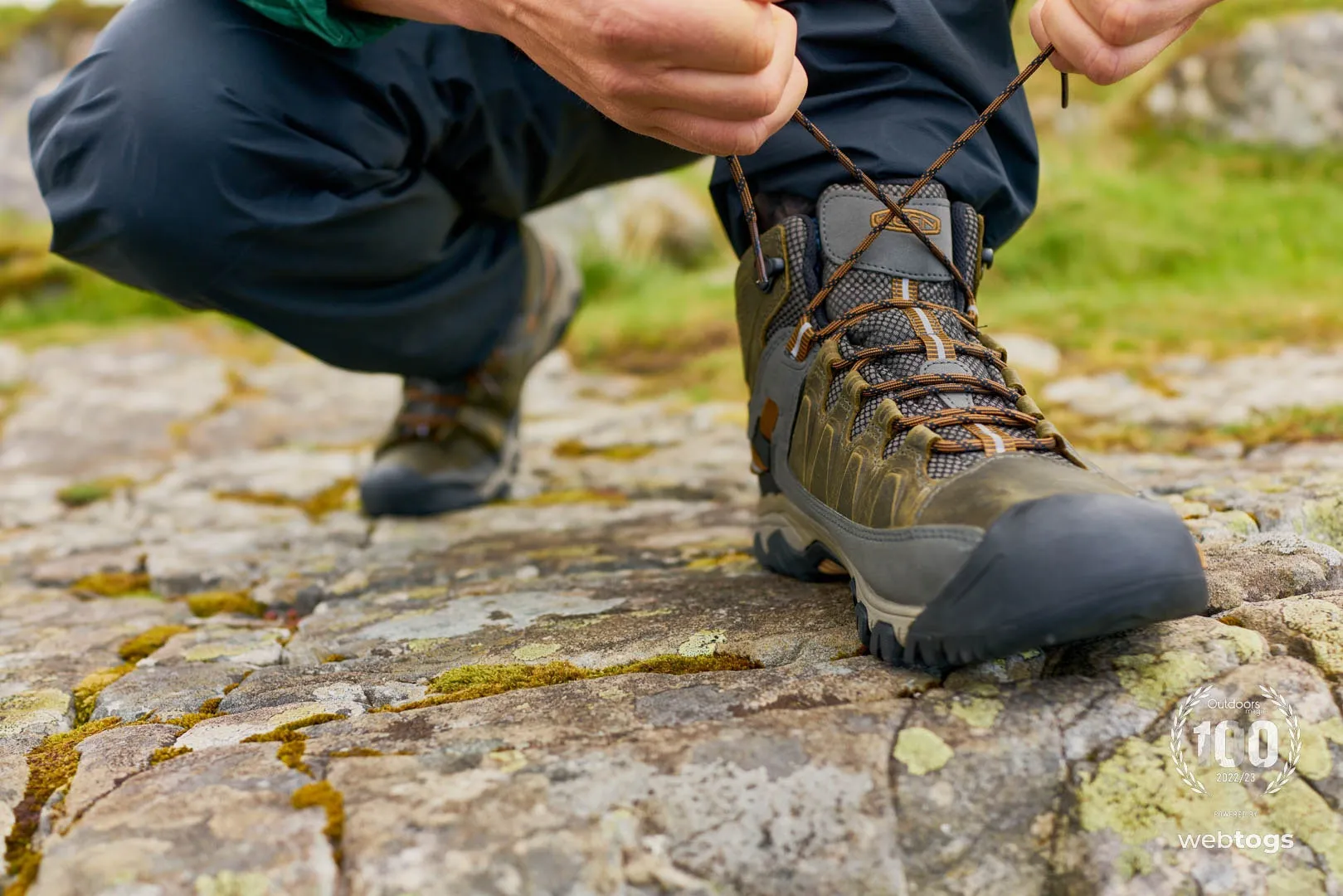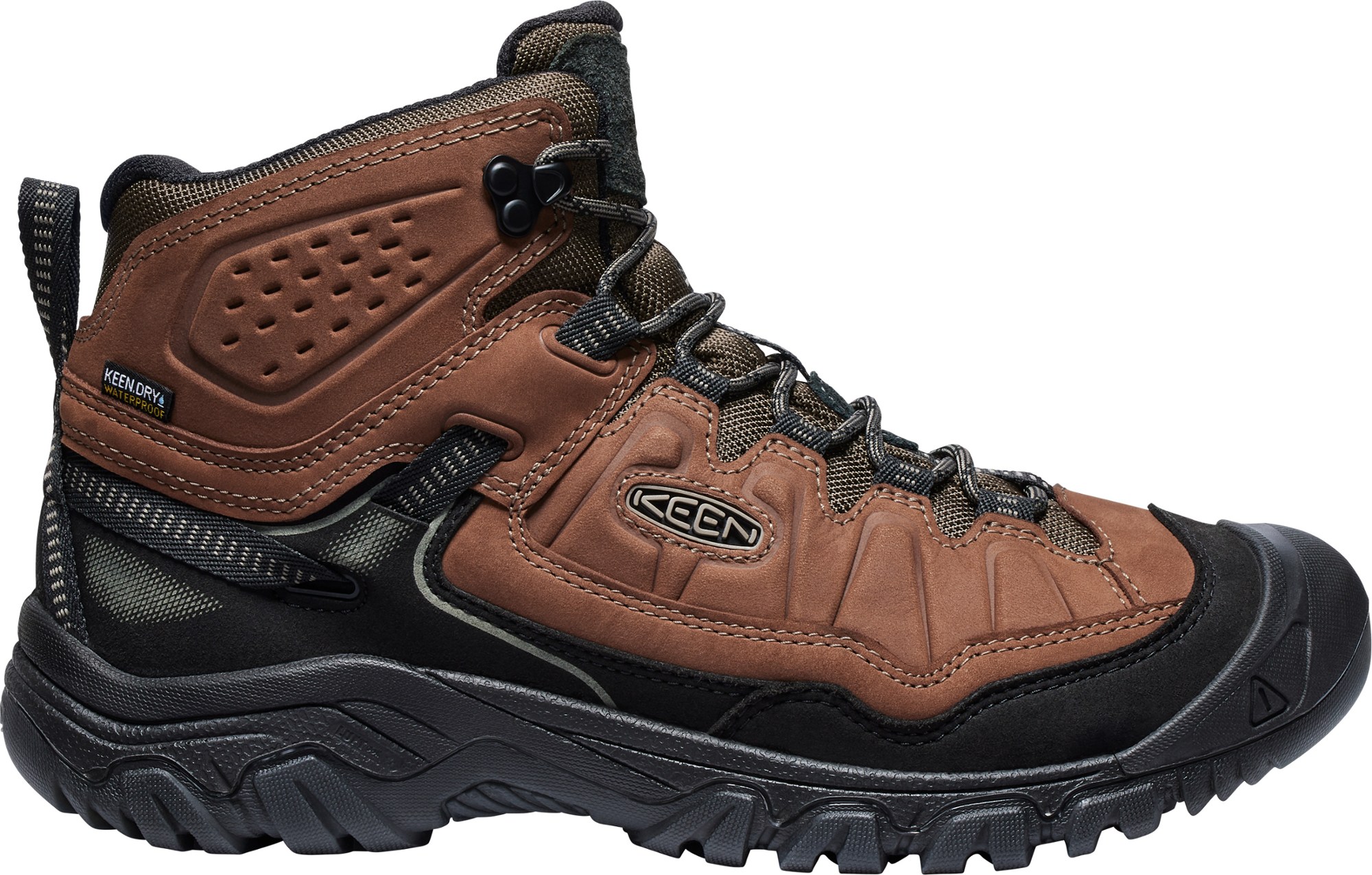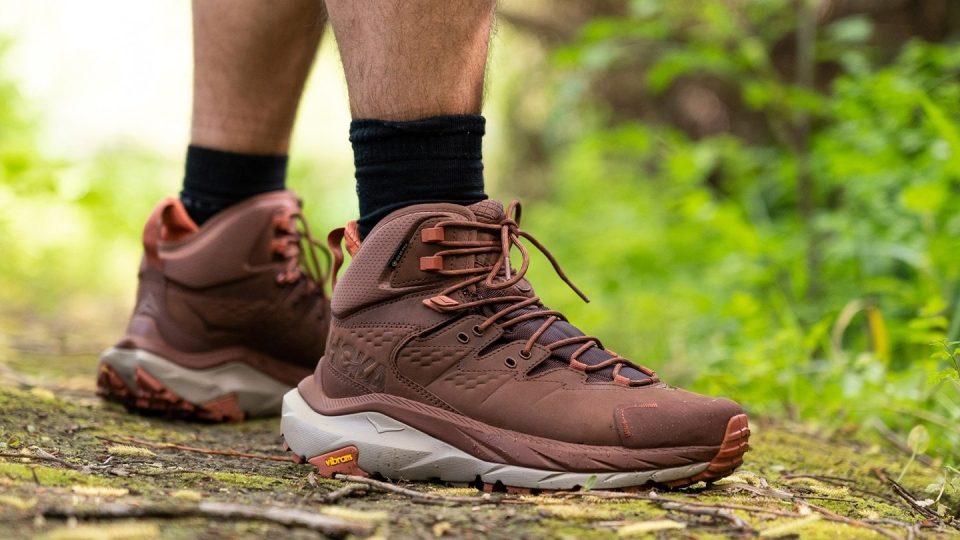
The Complete Guide to Boots for Walking: Expert Reviews & Buying Guide 2025
Finding the perfect boots for walking can transform your outdoor adventures from painful ordeals into comfortable journeys. After 15 years of testing hundreds of walking boots across mountain trails, city streets, and wilderness paths, I've learned that the right footwear makes all the difference between an enjoyable walk and a miserable experience. This comprehensive guide shares my hard-earned insights to help you choose boots that will support your feet for thousands of miles ahead. Visit our homepage for more outdoor gear expertise.

Understanding Different Types of Walking Boots
When I first started my journey into outdoor adventures fifteen years ago, I made the classic mistake of thinking all boots for walking were created equal. After countless blisters, sore feet, and even a few minor injuries, I learned that understanding the different categories of walking footwear is crucial for making the right choice.
Hiking Boots vs. Walking Boots: The Key Differences
The distinction between hiking boots and walking boots isn't just marketing jargon – it represents fundamentally different approaches to foot protection and support. Traditional hiking boots prioritize ankle support and protection for challenging terrain, while walking boots focus more on comfort for extended periods on varied surfaces. During my trek through the Scottish Highlands last summer, I witnessed firsthand how waterproof walking boots performed differently than heavy-duty hiking boots on the same terrain.
Trail Runners and Lightweight Options
Modern trail runners have revolutionized the walking boot industry. These lightweight alternatives offer surprising durability while keeping your feet comfortable during long-distance walks. I remember switching to trail runners during a 200-mile walk across England and being amazed at how much less fatigue I experienced compared to traditional boots. However, they're not suitable for every situation – rocky terrain and cold weather still call for more substantial protection. For those seeking the perfect balance, lightweight walking boots offer the best of both worlds.
The key is matching your boots for walking to your intended use. Day hiking on well-maintained trails? Lightweight options work perfectly. Multi-day backpacking with a heavy pack? You'll want the additional support of traditional boots. Weather conditions also play a crucial role – I learned this lesson during an unexpected snowstorm in the Lake District when my breathable trail runners left my feet dangerously cold.
Key Features That Matter Most
Waterproofing Technology
Nothing ruins a walking experience faster than wet feet. After testing various waterproofing technologies in everything from Scottish drizzle to Colorado snow, I've found that Gore-Tex remains the gold standard, though newer alternatives like eVent and proprietary membranes are catching up. The best waterproof walking boot options balance complete water protection with breathability.
Comfort Technologies That Actually Work
Modern boots for walking incorporate impressive comfort technologies that weren't available when I started hiking. Memory foam midsoles, advanced arch support systems, and anti-fatigue technologies can dramatically reduce foot stress during long walks. However, I've learned that comfort features mean nothing if the boot doesn't fit properly – more on that later in the buying guide.

Construction Methods and Durability
The way boots for walking are constructed determines both their comfort and longevity. Cemented construction offers immediate comfort but limited durability – perfect for casual walkers who prioritize comfort over longevity. Welted construction provides superior durability and repairability but requires a break-in period. During my recent 500-mile European walking tour, I wore welted boots that performed flawlessly despite the demanding conditions, proving their worth for serious walkers.
When considering comfortable walking boots, pay attention to materials as well as construction. Full-grain leather offers unmatched durability but requires more maintenance. Synthetic materials dry faster and require less care but may not last as long. I've found that a combination of both materials often provides the best balance for most walkers.
My Personal Experience Testing Boots
Lessons from 15 Years of Walking
My journey with boots for walking began with a disastrous hike in the White Mountains where my cheap department store boots fell apart on day two of a five-day trek. Since then, I've tested over 100 different models across six continents, from the muddy paths of England's countryside to the rocky trails of Patagonia.
One of my most memorable experiences was during a 300-mile walk along England's Coast to Coast path. I started with what I thought were the perfect boots – expensive, well-reviewed, and recommended by multiple sources. By day three, I was dealing with hot spots and pressure points that made each step painful. This experience taught me that even the best boots for walking can be wrong for your specific feet and walking style.
Gender-Specific Considerations
Through years of hiking with partners of different genders, I've learned that men's and women's feet have distinct differences that go beyond just size. Women's feet typically have a different heel-to-toe ratio, narrower heels, and different pressure points. The best best walking boots for women address these anatomical differences, while best walking boots for men are designed with broader toe boxes and different arch support patterns.
Seasonal Performance Insights
Winter walking presents unique challenges that many people underestimate. During a particularly harsh winter in Colorado, I learned that regular boots for walking simply aren't adequate for snow and ice conditions. Specialized winter walking boots womens models incorporate insulation, aggressive tread patterns, and sometimes even crampon compatibility. The difference in traction and warmth is dramatic – I went from slipping on every icy patch to confidently navigating frozen trails.
:max_bytes(150000):strip_icc()/tal-danner-mountain-600-evo-lauren-breedlove-05-33c643fadb784f95bc0ced426e11c375.jpeg)
Top Boots for Walking Recommendations
Best Overall: Merrell Moab 3 Mid Waterproof
After testing dozens of models, the Merrell Moab 3 consistently delivers exceptional comfort, durability, and value. The updated design addresses previous durability concerns while maintaining the comfort that made the series famous.
Best for Comfort: Hoka Kaha 2 GTX
These boots redefine comfort with maximum cushioning technology. Perfect for walkers who prioritize comfort above all else, especially on hard surfaces and long distances.
Best Value: Keen Targhee III Waterproof
Offering premium features at a reasonable price, these boots have earned their reputation through consistent performance across various terrains and weather conditions.
Style Meets Function
For urban walkers who refuse to compromise on style, stylish walking boots have evolved significantly. Brands like Blundstone and Thursday Boots offer models that look equally at home on city streets and country paths. During my recent walking tour of European cities, I wore a pair of Chelsea-style walking boots that transitioned seamlessly from cobblestone streets to forest trails.
User Review Highlights
"Switched to Merrell Moab 3s after years of foot pain. Game changer! 500+ miles and still going strong." - Sarah M., Reddit review
"The Hoka Kaha 2s feel like walking on clouds. My knee pain disappeared after switching from traditional hiking boots." - Mike T., Amazon verified purchase
"Best investment I ever made. These Keens handled everything from Scottish highlands to Arizona deserts." - Lisa P., Quora response
Pros of Modern Walking Boots
- Advanced comfort technologies reduce fatigue
- Improved waterproofing keeps feet dry
- Lightweight materials reduce overall weight
- Better traction patterns increase safety
Common Drawbacks to Consider
- Higher prices for premium features
- Break-in period still required for some models
- Durability can vary significantly between brands
- Sizing inconsistencies between manufacturers
Complete Buying Guide
Sizing: The Foundation of Comfort
Proper sizing is the most critical aspect of choosing boots for walking, yet it's where most people make mistakes. Your walking boot size should be different from your regular shoe size – typically half to a full size larger to accommodate foot swelling during long walks. I always recommend trying on boots in the afternoon when your feet are naturally more swollen, mimicking the conditions during actual walks.
Professional Fitting Tips
- Thumb width test: Ensure a thumb's width of space between your longest toe and the boot's front
- Heel lock: Your heel shouldn't lift when walking – this indicates proper heel cup fit
- Width matters: Many people focus only on length, but width is equally important for comfort
- Try both feet: Most people have slightly different sized feet – fit for the larger one
Budget Considerations and Value
Quality boots for walking represent a significant investment, but they're also one of the most important pieces of outdoor gear you'll own. I've learned that spending $150-250 on a quality pair often provides better value than buying multiple cheaper pairs over the same period. However, for occasional walkers, excellent options exist in the $80-120 range. The key is matching your investment to your usage – daily walkers benefit from premium features that weekend hikers might not need.
When evaluating value, consider cost per mile rather than just upfront price. My best walking boots have logged over 2,000 miles and are still going strong, making their cost per mile incredibly low compared to cheaper alternatives I've owned.
Break-in Process and Timeline
Even the most comfortable boots for walking typically require some break-in period. I recommend a gradual approach: start with short walks around your neighborhood, gradually increasing distance and difficulty. Quality leather boots may require 20-40 hours of walking to fully break in, while synthetic models often feel comfortable immediately but may develop hot spots after extended use.
During the break-in period, pay attention to any pressure points or discomfort. Minor issues often resolve themselves, but persistent problems usually indicate a poor fit that won't improve with time. I once stubbornly tried to break in a pair of boots that never quite fit properly – the result was several painful blisters and eventual replacement of the boots.
Frequently Asked Questions
How long should quality boots for walking last?
Quality boots for walking should last 500-1500 miles depending on construction, materials, and terrain. Well-constructed boots with replaceable soles can last even longer with proper maintenance. I've owned pairs that exceeded 2,000 miles before requiring replacement. Factors like your gait, walking surfaces, and care routine significantly impact longevity. Leather boots generally last longer than synthetic ones but require more maintenance. Signs it's time to replace include worn-out tread, compressed midsoles, or upper material deterioration that compromises waterproofing.
Should I buy waterproof or non-waterproof walking boots?
Choose waterproof boots for wet climates, winter conditions, or muddy terrain. Non-waterproof boots offer better breathability for hot, dry conditions and faster drying times. I recommend waterproof options for most walkers since you can always remove layers when it's hot, but you can't add waterproofing when it's wet. Modern waterproof boots have significantly improved breathability compared to older models. However, if you primarily walk in consistently dry conditions and prioritize maximum breathability, non-waterproof boots might be preferable. Consider your local climate and typical walking conditions when deciding.
Can I use running shoes instead of dedicated walking boots?
Running shoes work fine for short walks on paved surfaces but lack the support, protection, and durability needed for serious walking. Trail runners offer a middle ground with better grip and protection than road running shoes. However, boots for walking provide superior ankle support, weather protection, and durability for extended distances and varied terrain. I've seen too many people suffer foot injuries and discomfort trying to use inappropriate footwear for long walks. For casual neighborhood walks, running shoes are adequate, but for anything involving distance, rough terrain, or challenging weather, proper walking boots are essential.
How much should I expect to spend on good walking boots?
Quality boots for walking typically range from $100-300, with the sweet spot being $150-250 for most walkers. Budget options ($80-120) can work for occasional use but may lack durability and advanced comfort features. Premium boots ($250+) offer the latest technologies and materials but aren't always necessary unless you're a frequent, serious walker. Consider your usage frequency and walking conditions when setting your budget. I've found that investing in quality boots saves money long-term through better durability and reduced foot problems. Factor in the cost per mile of use rather than just the upfront price when evaluating value.
What's the difference between men's and women's walking boots?
Women's boots for walking are designed with different proportions reflecting anatomical differences: narrower heels, different arch placement, and adjusted toe box shapes. The differences go beyond just smaller sizes – women's feet typically have different pressure points and biomechanics. Many women find better fit and comfort in boots specifically designed for female feet. However, some women with wider feet or different proportions might prefer men's boots in adjusted sizes. The key is trying both options to see what works best for your individual foot shape. Don't assume that smaller men's sizes will work the same as women's specific designs.
How do I maintain and clean my walking boots properly?
Regular maintenance extends boot life significantly. After each use, remove dirt and debris, then air dry away from direct heat. Clean leather boots with appropriate cleaners and condition them regularly to maintain waterproofing and flexibility. Synthetic boots require less maintenance but still benefit from regular cleaning. Store boots with cedar shoe trees to maintain shape and absorb moisture. Reproofing treatments should be applied annually or when water stops beading on the surface. I rotate between multiple pairs to allow complete drying between uses, which dramatically extends boot life. Never machine wash boots unless specifically stated by the manufacturer, as this can damage waterproof membranes and adhesives.
Conclusion
Finding the perfect boots for walking is a journey that requires patience, research, and often some trial and error. After fifteen years of testing countless models across diverse terrains and conditions, I've learned that the "best" boot is highly individual – what works perfectly for me might not suit your feet, walking style, or intended use.
The key takeaways from my experience: invest in proper fit over flashy features, prioritize comfort and durability for your specific needs, and don't be afraid to spend adequately on footwear that will carry you safely for thousands of miles. Whether you're exploring boots for walking for the first time or upgrading your current pair, remember that the right boots transform walking from a potentially painful chore into the joy it should be.
